#peter brook le mahabharata
Text
The hidden afterlife of epics: Karthika Naïr on Peter Brook’s Le Mahabharata and Until the Lions
There are scenes in the film version of Peter Brook’sLe Mahabharata I return to, over and over; ones that I dissect at every available platform, in print and on stage.
Take the prelude to the treacherous dice game. Duryodhana (Georges Corraface), freshly returned from Indraprastha and scalded with envy at the ethereal delights of Maya’s palace, plots the downfall of the Pandava brothers with his…
View On WordPress
#adaptations of the mahabharata#Amba#Compare The Mahabharata and Until the Lions#Corinne Jaber#Duryodhana#Georges Corraface#Karthika Naïr#Le Mahabharata#le mahabharata and until the lions#mahabharata#mahabharata adaptations#Mallika Sarabhai#peter brook#peter brook le mahabharata#Shikhandi#the hidden afterlife of epics#the mahabharata#theatre#Until the Lions#Who wrote Until the Lions
1 note
·
View note
Text
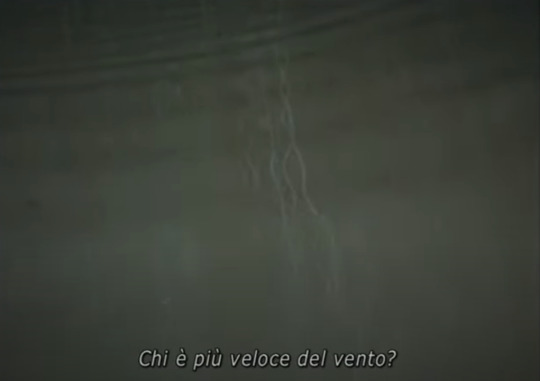
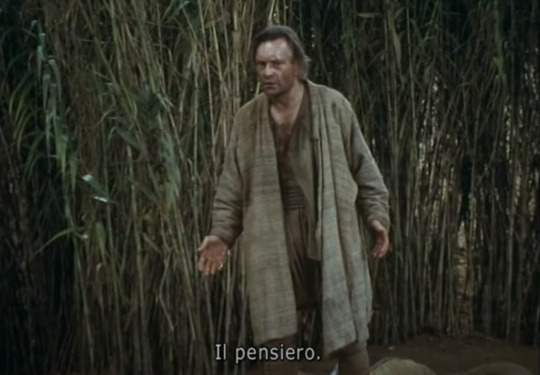



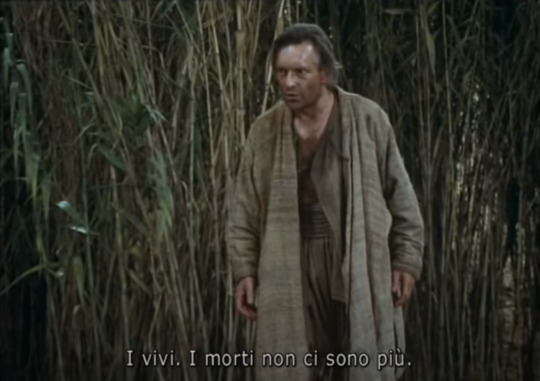
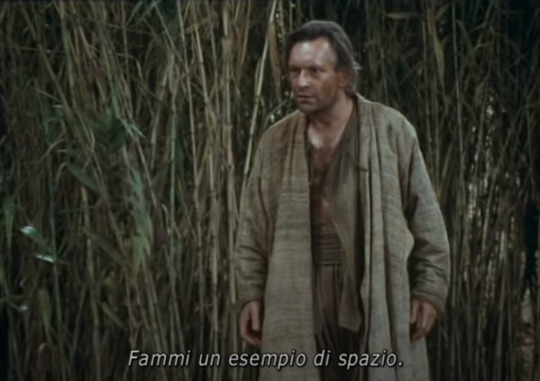

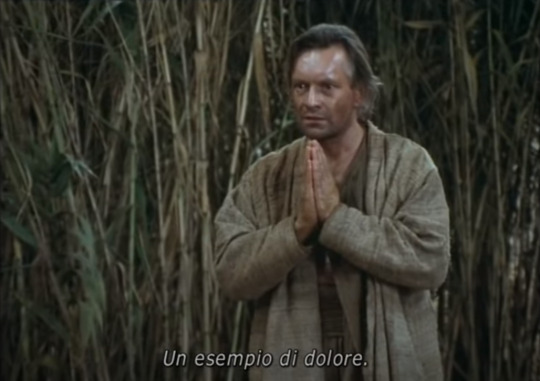
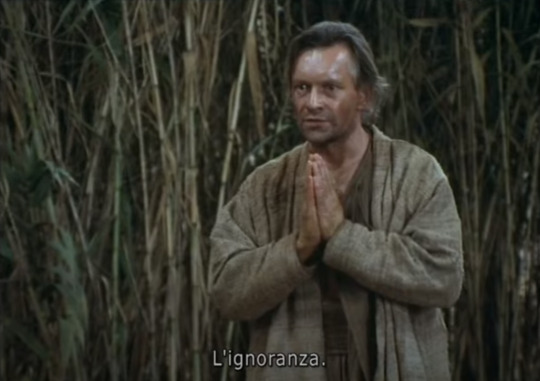
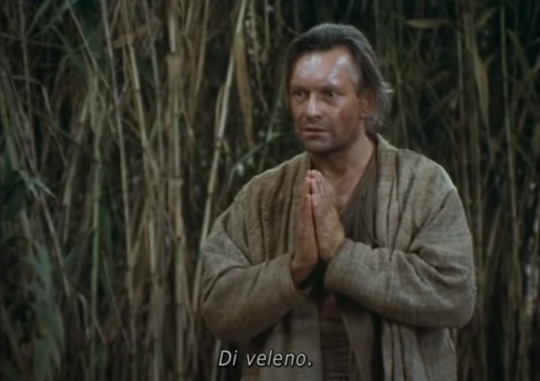








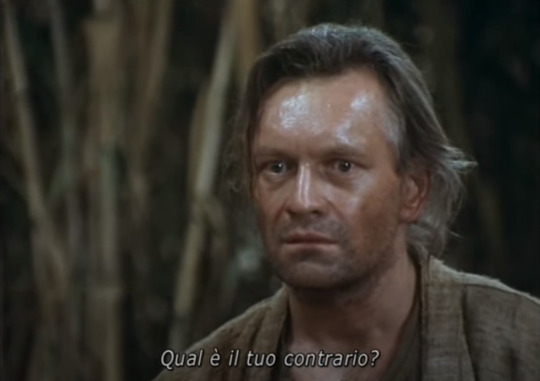



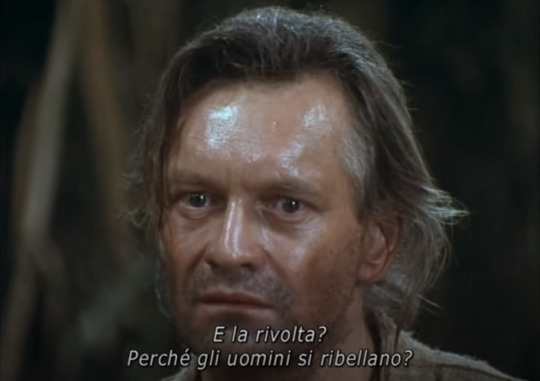



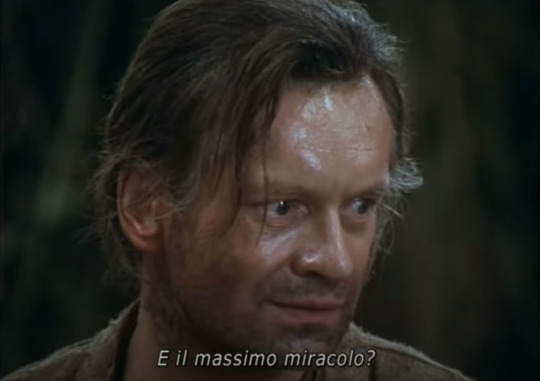
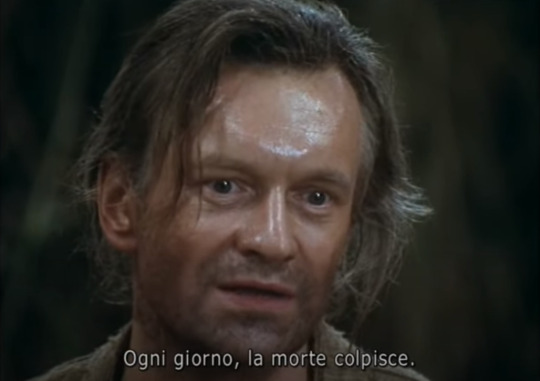

Le domande del lago - The Mahabharata, Peter Brook 1989
26 notes
·
View notes
Text
Terrena, agile, spirituale: la danza di Akram Khan
Durante il Catania Contemporanea/Fic Fest organizzato da Scenario Pubblico si innesterà il Fic Dance Workshop, dieci giorni di training e trasmissioni coreografiche focalizzati su creazioni di repertorio.
Durante i primi cinque giorni, dal 3 al 7 maggio, il lavoro sarà condotto da Joy Alpuerto Ritter danzatrice e coreografa, ripetiteur del repertorio di Akram Khan, uno dei coreografi più celebrati di oggi.

Con un breve attraversamento andremo a scoprire la figura di questo coreografo che, oltre ad arricchire il patrimonio immateriale del Regno Unito, ha segnato la storia della coreografia mondiale.

Akram Khan nasce a Londra nel 1974 da una famiglia bengalese. Inizia a studiare danza da bambino e all’età di tredici anni viene scelto da Peter Brook per la sua produzione MAHABHARATA (ovvero La grande storia dei discendenti di Bharat ispirata a un importante poema indiano). Continua i suoi studi nell'ambito della danza, collaborando per diversi anni con Anne Teresa De Keersmaeker che lascerà un segno profondo nel suo linguaggio. A partire dagli anni Novanta poi, inizia presentare le proprie coreografie.
Nel 2000 fonda la sua compagina di danza, l’Akram Khan Company, che ha debuttato all’Edinburgh Fringe Festival (annoverato tra i festival più famosi al mondo), con Koosh, in collaborazione con il celebre scultore Anish Kapoor e il musicista Niton Sowhney, entrambi di origine indiana.
Nel corso della sua carriera ha collaborato in qualità di coreografo con tantissimi teatri e compagnie in tutto il mondo. Ricordiamo la sua reinterpretazione del balletto Giselle per l’English National Ballet, in un allestimento in collaborazione con il Sadler’s Wells Theatre e il Manchester International Festival.
youtube
Nel 2019 ha vinto il Laurence Oliver Award per l’eccellenza della danza con il suo balletto Xenos.
youtube
Oggi Khan continua a portare avanti il suo lavoro circuitando nei più importanti teatri e festival tra Occidente e Oriente. Il suo ultimo lavoro, Jungle Book reimagined, è stato presentato in prima nazionale lo scorso settembre al Romaeuropa Festival.
Scrivono di Khan...
Un fluido e inclassificabile genio che accosta la cultura religiosa dell'Oriente del suo imprinting alle dinamiche della fisicità del suo Occidente d'approdo. (Rodolfo Di Giammarco - La Repubblica)
Lui, icona della danza contemporanea, distrugge i confini, disegna ambiguità, lascia che il palcoscenico divenga un flusso di energia che si muove al ritmo della tradizione per incontrare il presente, l’attimo in cui il gesto accade, il violento hic et nunc. (Redazione - Teatro e critica)
Nel gotha dei coreografi più riusciti e prolifici di oggi, Akram Khan abbraccia l’Oriente o l’Occidente in una danza scolpita che emana bellezza e trascendenza. (Giuseppe Distefano - Danza & Danza)
Come sempre, nelle danze di Akram Khan si ritrovano le geometrie alla De Keersmaeker sapientemente miscelate con elementi pop, come la break dance, o i riferimenti alla tradizione indiana, soprattutto nelle disposizioni lineari, come nei bassorilievi nei templi indù che raffigurano le danze delle Apsaras. (Enrico Pastore - Paneacquaculture)
[...] (i danzatori di) Akram Khan sono veri e propri ambasciatori della libertà di movimento attraverso le frontiere perché, come ha notato già diversi anni fa Elisa Vaccarino (E. G. Vaccarino, Danze plurali/L’altrove qui, Macerata, Ephemeria Editrice, 2009), non sintetizzano più soltanto nel loro operato una “fusione multietnica”, bensì incarnano in loro stessi una vera e propria identità “plurima”. (Francesca Magnini – Artribune)
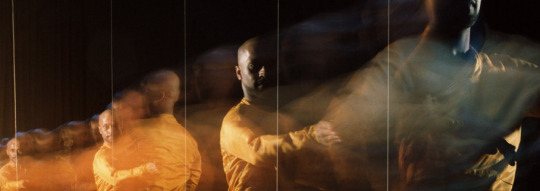


[Consigli di visione]
Negli ultimi anni, Khan è si è impegnato anche nella divulgazione della danza realizzando documentari come
Can we live with Robots? Prodotto da Swan Films per Channel 4;
Why do we dance (in cinque episodi intitolati: Storie, Provocazione, Anima e Corpo, Identità, Eros) per Sky, qui il link https://www.nowtv.it/streaming/dance-perche-balliamo/skyarte_b1ee405897c040489d5ab14ba37ea817/skyarte_5ed571baef0a4e7d9ed062cb0ba11026/seasons/1;
Un episodio (il quinto) della serie MOVE che puoi trovare su Netflix.
Nel prossimo attraversamento parleremo di Marco Goecke, altro protagonista del Fic Dance Workshop 2024.
a cura di: Sofia Bordieri
0 notes
Text
The hidden afterlife of epics: Karthika Naïr on Peter Brook’s Le Mahabharata and Until the Lions
The hidden afterlife of epics: Karthika Naïr on Peter Brook’s Le Mahabharata and Until the Lions
Looking back at Peter Brook’s Le Mahabharata, the French-Indian poet says the inconsistencies taught her that creators need not be driven by the same truth while making art
Looking back at Peter Brook’s Le Mahabharata, the French-Indian poet says the inconsistencies taught her that creators need not be driven by the same truth while making art
There are scenes in the film version of Peter…

View On WordPress
0 notes
Link
1 note
·
View note
Text
Referente 1
Organ²/ASLSP (As SLow aS Possible)
La pieza (cuya partitura tiene tan solo ocho páginas) fue compuesta, para piano, por el compositor estadounidense John Cage siendo adaptada dos años después para órgano. Pero el compositor nunca especificó cómo de lento debía ser interpretada... Cinco años después de la muerte del compositor, en 1997, un simposio de órgano de Trossingen, Alemania, llegó a la conclusión de que la obra comenzaría el 5 de septiembre de 2001, día en que Cage hubiese cumplido 89 años, y tendría una duración de 639 años, finalizando en 2640, siendo así la obra musical más larga y más lenta del mundo.
Desde 2001 ha reproducido solo 14 cambios de acorde, siendo el más reciente el que se tocó el 5 de septiembre de 2020. El siguiente cambio está programado para el 5 de febrero de 2022.
youtube
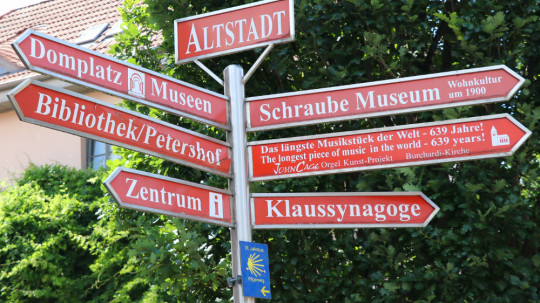
“Límites contra el diablo del aburrimiento”
-6 horas: versión teatral del Mahabharata, Peter Brook
- 120 o más horas: telenovela Café: con aroma de mujer
-15 horas y media: serie de televisión Berlin Alexanderplatz de Rainer Werner Fassbinder.
-12 horas y 40 minutos: Out 1, comedia humana de Jacques Rivette
- 12 horas: representación de Les Atrides del Théâtre du Soleil de Ariane Mnouchkine.
-5 horas: album Einstein on The Beach de Bob Wilson y Philip Glass
-15 horas: tetralogía operática El anillo del Nibelungo de Richard Wagner
“Pienso que la reflexión tiene que apuntar directamente hacia una batalla abierta, profunda, sin vergüenza, contra el miedo a estarse quieto. [...] La extensión está determinada por la medida del tiempo de quien lo mira.[...] A donde quiero llegar es a establecer que nuestra época no puede imponernos ritmos de brevedad para hacerles el favor a los espectadores de que se sientan cómodos. Nadie debe hacer obras para “llegarle” al público. El público debe ir a las obras, como se va a la iglesia o a los partidos de fútbol. Es decir, con la grata obligación de correr riesgos, incluso el del aburrimiento.”
(Elogio del aburrimiento, Sandro Romero Rey, 2011)
0 notes
Photo
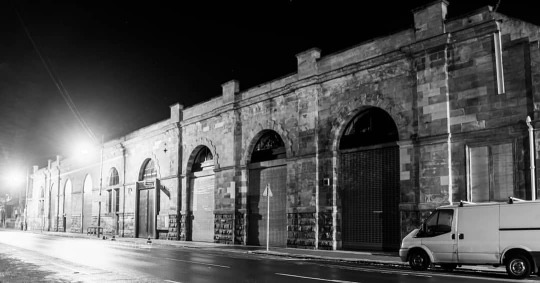
Day 303 of 365 Photo Challenge. Tramway is a contemporary visual and performing arts venue located in the Scottish city of Glasgow. Based in a former tram depot in the Pollokshields area of the South Side, it consists of two performance spaces and two galleries, as well as offering facilities for community and artistic projects. The Hidden Gardens is situated behind Tramway. The new extension to Tramway is the home of the Scottish Ballet, and is claimed to be one of the leading venues of its type in Europe. The Tramway occupies the former Coplawhill Glasgow Corporation Tramways depot. The original horse tram depot was constructed in 1894, and further workshops were added between 1899 and 1912. It was converted for use as the Glasgow Museum of Transport in 1964, until the museum relocated to Kelvin Hall in 1987. It was first used as a performance venue in 1988, with Peter Brook's The Mahabharata. In 1990, it was a prominent venue as part of the European City of Culture celebrations. It has been protected as a category B listed building since 1990. It has hosted many leading international and Scottish performers and artists, including Robert Lepage, Douglas Gordon and Les Ballets C de la B. As well as having close links to Glasgow School of Art and the Royal Scottish Academy of Music and Drama. Exhibitions have included the seminal new works by Christine Borland and Douglas Gordon. Tramway also has a very successful company for young people called Junction 25, run by Tashi Gore and Jess Thorpe of Glas(s) Performance, who have endured international success as well as having a biannual Edinburgh Festival Fringe run. The group celebrated their tenth anniversary in March 2015. Tramway was also the base for Glas(s) Performance's 2013 project, Albert Drive. In 2003, plans to close the arts centre and convert the building to rehearsal and ancillary space for Scottish Ballet resulted in massive opposition from the arts community and the wider public. Continued on Mathew Rooney Photography Facebook page. #glasgow #scotland #peoplemakeglasgow #visitglasgow #photooftheday #glasgow2019 #photography #365daychallenge #tramway #tramwaydepot (at Tramway) https://www.instagram.com/p/B4QqXs7BYac/?igshid=14ic50x9b6lol
#glasgow#scotland#peoplemakeglasgow#visitglasgow#photooftheday#glasgow2019#photography#365daychallenge#tramway#tramwaydepot
0 notes
Text
Peter Brook, Princesa de Asturias de las Artes, en diez obras
Madrid, 24 abr (EFE).- Peter Brook, el gran renovador del teatro contemporáneo y Princesa de Asturias de las Artes, acumula más de siete décadas de carrera a sus espaldas, un tiempo en el que ha explorado los límites de la dramaturgia combinando riesgo y lucidez. Estas son diez de sus obras más importantes. - "El Rey Lear" (1962): Shakespeare ha sido fundamental en carrera de Brook, un autor al que ha aportado una visión cargada de vigencia y frescura. Esta producción, alejada de cualquier moralismo, fue una de las primeras al frente de la Royal Shakespeare Theatre (RSC), luego llegarían "Edipo" o "Sueño de una noche de verano". - "Marat-Sade" (1964): Este retrato sobre el sufrimiento humano y las revoluciones sociales es una obra dentro de otra obra. La producción, escrita por Peter Weiss, retrata la representación teatral de la persecución del político Jean-Paul Marat, a cargo de los internados en una institución mental dirigidos por el Marqués de Sade. - "El sueño de una noche de verano" (1970): Está considerada como una de las grandes adaptaciones de la obra de Shakespeare y una de las obras cumbre de Brook. Su peculiar propuesta, con una escenografía consistente en una simple caja blanca y un reparto con habilidades circenses y trajes monocolor, le granjeó alabanzas de crítica y público. - "La Tragedia de Carmen" (1981). El dramaturgo inglés redujo la ópera de Bizet a la mínima expresión: eliminó el coro, redujo a cuatro los personajes y acortó su duración a noventa minutos. La obra, con música de Marius Constant, fue representada dos años después (1983) en Barcelona. - "Mahabharata" (1985). Esta obra supuso la consagración definitiva de Brooks, tardó diez años en prepararla y su montaje original se prolongaba durante seis horas. Basado en un texto épico indio antiguo, el dramaturgo inglés analiza la naturaleza humana a través de una historia sobre la guerra que destruye a una familia. - "El hombre que" (1993): Inspirada en el texto "El hombre que confundió a su esposa con un sombrero" (Oliver Sacks), este montaje es una incursión más de Brook en la complejidad de la mente humana, a través de una serie de historias sobre pacientes con enfermedades neurológicas. - "The suit" (El traje, 2012): Brooks sube al escenario una historia que habla sobre la opresión y la necesidad de compasión, de rabiosa actualidad, en la que combina temas constantes en sus últimos años como son África y la música. La obra está codirigida junto a Marie-Hélène Estienne, su colaboradora más estrecha en las últimas décadas. - "El valle del asombro" (2013): Creada también junto a Estienne, la obra aborda el fenómeno de la sinestesia y está basado en años de investigación neurológica, historias reales y el libro místico iraní "La conferencia de los pájaros". La obra abrió el XXXII Festival de Otoño a Primavera de Madrid en 2014 y participó en festival Temporada Alta de Girona, dos citas teatrales del que es un habitual. - "Battlefield" (2015): Esta adaptación de uno de los pasajes de "Mahabharata", también realizada por Estienne, sube al escenario a cuatro actores y un músico para abordar la capacidad de destrucción humana y la esperanza. La pieza clausuró el XXXIII Festival de Otoño a Primavera de los Teatros del Canal. - "Moderato Cantabile" (1960): Además de la dramaturgia, Brook exploró otras disciplinas como el cine. Este filme, basado en una novela de Margarite Duras, sobre una mujer casada con una existencia aburrida y monótona. La obra fue seleccionada para Cannes y Jean Moreau se alzó con el Premio a la Mejor Actriz. Celia Sierra El director teatral Peter Brook. EFE/Archivo
#_revsp:efe.es#_uuid:346ee7b5-c64d-3950-9af3-df8f0295f490#_category:yct:001000076#_lmsid:a077000000Kgol7AAB
0 notes
Text
Peter Brook: the constant innovator | Clara Bauer on the man who revived Theatre des Bouffes du Nord and directed The Mahabharata
Clara Bauer, 47, first met Peter Brook, one in all the most influential theatre administrators of the twentieth century, when she was 19. He was in the viewers when she watched his play, Happy End, in Paris. Then years later, circumstances helped her get a job with him, as his director of manufacturing, working on reveals similar to The Man Who, Le Costume, Tierno Bokar, and The Tragedy of…
View On WordPress
#Atiq Rahimi#Clara Bauer#Compagnie Mia#Happy End#Irina Brook#Is Peter Brook alive?#Kalieaswari Srinivasan#Le Mahabharata#L’Homme Qui#Mallika Sarabhai#Natasha Parry#peter brook#Syngué Sabour#the mahabharata#The Man Who#The Patience Stone#The Prisoner#theatre#Théâtre des Bouffes du Nord#Theatre director#What is Peter Brook known for?#Who was Peter Brook inspired by?
0 notes
Text
« Les Murs parlent, échos d’un travail » L’espace plein de Peter Brook.
La mémoire orale est une source de connaissances sur le passé, non pas comme il était, mais comme un souvenir a la valeur qu'elle avait pour ses acteurs.
"Les Murs parlent, échos d’un travail", nous a fait revivre plus de 40 ans d'histoire dédiée à la création théâtrale et artistique du Théâtre des Bouffes de Nord. Un espace vide sur la forme mais rempli sur le fond. Une rencontre entre le spectateur-acteur dans ce processus avec l'acteur-spectateur de cette évolution.
La salle était pleine, les voix et le bruit des personnes remplissaient l'air de la maison fermée dans les vieux murs, pas de rideaux, pas de lumières qui indiquent le début d'un spectacle, mais tout à coup, il prend la tête de la chaise comme un bâton de marche et commence à s’élever très lentement, au rythme des rideaux qui ne veulent pas nous faire découvrir la scène, soudainement, en nous laissant l’intrigue et le désir mouvement après mouvement. Les murmures des gens s’abattent dans chaque centimètre du corps qui fait son entrée majestueuse et silencieuse. Ses marches chanceler en cherchant le centre, et le public le reçoit dans un silence unisson et attentif. Peter Brook a commencé la scène en parlant et il nous introduit son premier mot : « Représentation »
Trois jours d'échange et de dialogue, un espace qui est devenu un spectateur, et des murs qui regardent d’une proche distance ses invités.
Imaginé les espaces et les émotions
Si on connaît Peter Brook, on connaît la réussite de sa recherche qui est de laisser au spectateur d’imaginer les espaces et décoration de ses scènes, pour se concentrer dans le corps et la voix de ses acteurs. Mais cette fois pendant trois jours, il a laissé ses acteurs, et lui même, se concentrer sur le public en attendant les silences ou les interventions pour continuer ou arrêter une conversation. Le regard fixe des narrateurs-acteurs vers le public, l’écoute active du public-intervenant ont donné un air de partage et d’echange entre les deux, condition indispensable pour parler du théâtre, dans le théâtre.
Le théâtre devient alors un lieu de mémoire partagé, un lieu de vie marqué par des souvenirs, des souvenirs qui parfois échappent à l'œil du spectateur, mais qui sont partie essentiel de la création théâtrale. Et cette fois ci c’était la découverte vers la redécouverte pour être tous protagonistes.
Cet événement a été un processus dans le temps et l’espace, qui s’est développé simultanément par de multiples canaux et de multiples centres récepteurs qui a donné une relation proche entre ses publics. Celui-là, c’est un mode de théâtre partagée qui créer différents modes de relation entre les êtres humains, c’est ce qui justifie son lien avec le social, et voici l’importance de ce type d’évènement avec la recherche et la création dans les arts scéniques.
On a dû imaginer chaque émotion vécue et on a vécus des émotions. Plus de deux générations, tant du coté du public que des artistes, on accompagne chaque journée, où l’unique protagoniste a été le théâtre lui même, sa structure qui a supporté chaque pas.
L'enregistrement du « no réel », donne une nouvelle réalité.
Sur un écran au milieu du théâtre, a été projeté plusieurs images des différentes étapes du processus de création de certaines œuvres de Peter Brook comme par exemple La Tragedie de Carmen, Mahabharata ou La Tempête. La présence en direct de ses acteurs qui ont raconté leurs anecdotes ont donné un nouveau battement à chaque image projetée, par exemple, Chloé Obolensky (en charge des décors et costumes) a raconté ses efforts pour trouver et déplacer des tonnes de sable pour la mise en scène de Carmen, Bakary Sanguaré (acteur) son expérience avec la police qui a inspiré une scène de la pièce La Tempête. Aussi, la participation de deux chanteurs et acteurs d’opéra qui avaient participé dans Carmen qui ont représenté un des extraits de ce fameux travail de Brook, la musique en direct d’un pianiste et l'apparition sur l’écran du grand Sotiguie Kouyaté dans une scène enregistrée de Mahabharata, et Natacha Parry, la défunte épouses de Brook.
L'accessibilité de ces matériaux peut faciliter les approches historiques de différents points de vue. La recherche c’est non seulement mettre l'attention sur ceux qui travaillent dans le milieu universitaire ou spécialisé, mais aussi, chaque artiste doit résoudre par lui-même un certain nombre de questions pratiques que se posent (le metteur en scène, les acteurs, les dramaturges, etc) et ont également la responsabilité d'approfondir tel ou tel détail dans les motifs historiques ou théoriques; à partir de ce moment, la visite des archives est inévitable.
D'ailleurs ne pas enregistrée "la réalité", naît un registre qui se réfère à une situation qui n’existerai plus ou du moins, pas de la même manière. La mise en scène ne sera jamais la même scène photographiée ou filmé, c’est pour cela qu’il est généré une nouvelle «réalité».
Pour une compagnie où un théâtre, préserver des photographies et des vidéos de leur processus de création, des artistes ou du travail hors de la scène peut être une façon de reconstruire son histoire visuelle. En outre, ces documents peuvent faciliter la problématisation et la compréhension des diverses questions liées à la production et la circulation des productions théâtrales, mais aussi avec les processus de construction des politiques culturelles et sociales.
Finalement, la mémoire orale est une source de connaissances sur le passé, non pas comme il était, mais comme souvenir à la valeur qu'elle avait pour ses acteurs.
Kay Zevallos Villegas.
1 note
·
View note
Text
Retrospection time: I want to extend a big gratuitous “what the fuck!?” to my father who in his infinite parental wisdom had let the 8 years old me read Thorgal, then later at 10+ Conan the Barbarian books, but had qualms about gifting me ‘Le grand pouvoir du Chninkel’ when I was over 18!?
Dude, what the actual fuck? I just realized this has absolutely NO consistency.
Thorgal was bloody and explicit. The amount of tits, pussy, violence, and sex on the page could be even higher than in Conan the Barbarian. Conan the Barbarian was straight up gore and sex (and goddamn white apes and snakes with woman heads).
The only thing Chninkel had on those two was body horror and the whole philosophical partially anti-religious and anti-catholic thing it had going on.
Also, dude, A+ parenting, yeah, let your kid watch bloody movies, late-night criminal drama, see the most beautiful potential death onscreen that ever existed (smothered by Daryl Hannah’s tighs), let them be traumatised for over a year due to watching ‘Birds’, and then forbid them from watching Peter Brook’s Mahabharata when they’re much older.
Dude, seriously, if you ever start talking about grandchildren again, I’m gonna just play you the whole video of Arioch vs giant carnivorous babies from space, full volume.
0 notes
Text
Things to do in Montréal March 24 to 30
It’s officially spring and Montréal is ready to celebrate! Enjoy bountiful food (get yourself to a sugar shack!), colourful art and films to match, a Pink Floyd opera, contemporary dance, live music and even butterflies in flight at the Botanical Garden.
Spring forward
It’s officially spring, no matter what the weather, and officially fun if you’re here on Spring Break: let our guide to restaurants, bars and parties for spring break in Montréal lead the way to letting loose. Or for kid-friendly fare, follow our guides to things to do for families during spring break and free things to do this Spring in Montréal. Art lovers can take a walk through the underground city to peruse Art Souterrain‘s miles of art installations or walk through Old Montréal at night to see history unfold in the beautiful tableaux projections of Cité Memoire. Nature lovers can roam among the butterflies at the Botanical Garden’s Butterflies Go Free event, part of the Montréal Space for Life‘s many activities. And fans of classic comic Astérix can see their fave characters rendered in life-like wax at Grévin Montréal. As the regular NHL season approaches its end, the Montréal Canadiens take on the Senators on March 25, the Stars on March 28 and the Panthers on March 30 at the Bell Centre. And on the mat, WWE Live – Road To Wrestlemania bodyslams the Bell Centre on March 24.
Food and drink
The maple syrup’s flowing and the tables are stacked with tourtière, sugar pie, sausages and so much more at a Québécois cabane à sucre , also known as a sugar shack, in the country or the city. Or let your sweet tooth take the lead with a trip to the candy shop. On the other end of the spectrum: it’s all about healthy eating and green living (and free samples and demos!) at Expo Manger Santé et Vivre Vert March 24-26 at Palais des Congrès. Mix Québécois tradition with tropical flavours at the Casino de Montréal’s lunchtime Copacabanashak Buffet. Explore the menus of new Montréal restaurants or warm up with a cup of tea at Montréal’s tea houses, a big bowl of pho, Japanese authentic ramen, a signature winter cocktail at one of Montréal’s Hidden Bars, or a relaxed evening next to Montréal’s coziest fireplaces. And have a drink and sing your heart out at Montréal’s best karaoke bars.
youtube
On stage
Roger Waters’ The Wall takes an operatic turn in the world premier of composer Julien Bilodeau’s Another Brick in the Wall, part of Montréal’s 375th anniversary programming, at Place des Arts to March 27. Montréal’s winter-spring dance program includes the not-to-be-missed Akram Khan Company’s Until the Lions, March 17-25 on an amazing circular stage set by Tim Yip at La Tohu, while Les Grands Ballets presents the contemporary dance of Ohad Naharin’s Minus One, to April 1. In theatre: Centaur Theatre presents thoughtful, humorous family drama You Will Remember Me; Black Theatre Workshop and Tableau D’Hôte co-present Angélique, based on Marie-Joseph Angélique, a slave executed for allegedly set fire to Montréal in 1734, at the Segal Centre to April 2; and Battlefield brings ancient text The Mahabharata to the stage, directed by Peter Brook, at Place des Arts. For kids, there’s the excellent children’s theatre of Geordie Theatre Fest, March 21-26, and classic fairy tale with a choose-your-own-adventure twist, Wake up, Sleeping Beauty! at Centaur Theatre on the morning of March 25. And if you’re fluent in French comedy, François Boulianne hosts ComediHa! Club at the Cabaret du Casino on March 23.
On screen
New and enlightening films on art, music, dance, film and more make the 35th International Festival of Films on Art a must for both film and art lovers, at various venues March 23 to April 2. Virtual reality pioneers Felix & Paul Studios present their latest creations including four Cirque du Soleil experiences at the Phi Centre‘s Virtual Reality Garden installation. The Phi Centre also screens selected independent films from the Venice International Film Festival, plus a 20th-anniversary screening of Good Will Hunting on March 28. The Cinémathèque québécoise‘s free installation Détectives de la Pataphysique showcases the awe-inspiring films of Clyde Henry Productions’ Chris Lavis and Maciek Szczerbowski (known for animated short Madame Tutli-Putli among other eclectic work), while the 10 + 10 Visages du cinéma québécois features portraits of 20 Québécois directors. Immerse yourself in high-tech films Inertia and Morphogenesis in the Satosphere surround-sound dome. And see if you recognize the city sights in these movies filmed in Montréal.
Museums and galleries
Step into the wonderous world of CHAGALL: COLOUR AND MUSIC at the Montreal Museum of Fine Arts, featuring 340 pieces by the Russian-French artist accompanied by music. The Musée d’art contemporain shows work by foremost Mexican artist Teresa Margolles, as well as Québec artist Emanuel Licha’s Now Have a Look at This Machine documentary installation. Galerie de l’UQAM presents noted Scottish artist Graham Fagen‘s video and music-based installation The Slave’s Lament. Never Apart’s winter exhibition celebrates Black heritage, Indigenous women and more – and on March 24 features a talk entitled Jaywalking by digital artist Dries Depoorter. See quintessentially ’60s fashion by Québec designers at the McCord Museum‘s Fashioning Expo 67, featuring over 60 outfits and products. And while art abounds year-round in the city’s most stunning churches and other sacred sites, it reaches great high-tech heights in Aura, an immersive new light show at Notre-Dame Basilica.
vimeo
Live music
The Jazz en Rafale festival presents Félix Stüssi and Les Malcommodes and the Auguste Quartet on Friday at L’Astral, followed on Saturday by Pierre de Bethmann and Yannick Rieu quartet. Also on Friday, multi-platinum songwriter and singer Bebe Rexha comes to Montréal with opener Daniel Skye at Le Belmont. Saturday night brings Californian hip hop artist Vince Staples and Kilo Kish to Théâtre Corona, while French band Nouvelle Vague rides new wave into the SAT, Parisian electronic artist FKJ plays his style of New French House and more at Théâtre Berri, Produkt & Bakermat present new show Bakermat’s Circus with electro producers Throttle and SAINT WKND at New City Gas, and indie music project Waxahatchee plus Kevin Morby and Mary Lattimore play Théatre Plaza. On Sunday, British indie pop band Bastille and singer-songwriter Mondo Cozmo get bombastic at the Bell Centre, while local arts invention Distroboto throws a sweet-16 musical benefit party at Casa del Popolo. Monday’s must-see: The Courtneys at Bar Le “Ritz” PDB. On Tuesday, rockers Dude York coheadline with Paws at Bar Le “Ritz” PDB, dance-pop duo POWERS revs up La Sala Rossa and Italian singer-songwriter Zucchero brings his Black Cat Tour to L’Olympia. Some of Montréal’s most talented and charming musicians gather on Wednesday for An Evening of Song in Celebration of Leonard Cohen at La Sala Rossa. Thursday brings large-scale ambient music project Tycho to Metropolis and singer-songwriter Virginia To Vegas to Le Belmont. Experience Mozart and de Falla’s Spain in The Orchestre symphonique de Montréal‘s Nights in the Garden of Spain concert on March 30 at Place des Arts. And Québécois music legend Robert Charlebois plays an intimate “rock’oustic” concert at Place des Arts’ Cinquième Salle, March 30 to April 1.
Up next : Free things to do this spring in Montréal
The post Things to do in Montréal March 24 to 30 appeared first on Tourisme Montréal Blog.
http://ift.tt/2mUW5nH
0 notes
Text
Things to do in Montréal March 17 to 23
Even in the midst of a snow storm, the idea of spring is on the minds of Montrealers by late March – one of the sure signs of the season is the city’s huge St. Patrick’s Day parade, joined this week by sugar shack season, a Pink Floyd opera, the vivid colours of Chagall, butterflies at the Botanical Garden, and plenty more.
St. Patrick’s Day party
Montréal may be one of the biggest French speaking cities in the world, but its varied history wouldn’t be quite as colourful without its long-standingn Irish contingent. That’s why Montréal boasts the longest consecutive running St. Patrick’s Day parade in the world – see what it’s all about on March 19 as the parade dances and drums for all ages along Sainte-Catherine Street downtown. Add to the annual tradition by raising a glass at the city’s best Irish pubs – our guide to 10 things you didn’t know about the St. Patrick’s Day celebrations in Montréal makes for great bar fodder.
Une publication partagée par #CINQCENTQUATORZE ® (@jfsavaria) le 16 Mars 2017 à 7h52 PDT
Spring anticipation
Snowstorms rival sunny days in March, so if you’re here on Spring Break, keep your plans flexible: our guide to restaurants, bars and parties for spring break in Montréal has plenty of ideas for letting loose, while our guide to things to do for families during spring break engages kids and adults alike in fun activities. Indoors: take a walk through the underground city to see Art Souterrain‘s miles of art installations; frolic among the butterflies indoors at the Botanical Garden’s wonderful Butterflies Go Free event, part of the Montréal Space for Life‘s many activities; or see the characters of classic comic Astérix step off the page at Grévin Montréal wax museum’s exhibition. And on the ice, the Montréal Canadiens take on the Senators on March 19, Red Wings on March 21 and the Hurricanes on March 23, at the Bell Centre.
Food and drink
With spring on the horizon, it’s officially sugaring off season in Québec – that means the maple syrup’s flowing and the tables are stacked with tortiere, sugar pie, sausages and so much more – indulge in a Québecois sugar shack meal in the country or the city. Learn – and eat – more in a free Sugar Shack Workshop with Urban Bonfire on March 20. Or dig into lunch at the Casino de Montréal’s tropical-themed Copacabanashak Buffet. Explore the menus of new Montréal restaurants to find original dishes and welcoming ambience. Warm up with a cup of tea at Montréal’s tea houses, a big bowl of pho or Japanese authentic ramen, a signature winter cocktail at one of Montréal’s Hidden Bars, or a relaxed evening next to Montréal’s coziest fireplaces. Follow it all up with a trip to the candy shop. And for true food enthusiasts, hear esteemed Swedish chef Magnus Nilsson in conversation on the topic of Nordic cuisines, at the Phi Centre on March 20.
youtube
On stage
Montréal’s 375th anniversary celebrations shines the spotlight on composer Julien Bilodeau’s Another Brick in the Wall, an operatic version of Roger Waters’ The Wall, making its world premier at Place des Arts March 11-27. Montréal’s winter-spring dance program includes the not-to-be-missed Akram Khan Company’s Until the Lions, March 17-25 on an amazing circular stage set by Tim Yip at La Tohu and Les Grands Ballets‘ contemporary dance presentation of Ohad Naharin’s Minus One, March 23 to April 1. In theatre: follow the lives of a Korean-Canadian family in Ins Choi’s hit comedy Kim’s Convenience at Segal Centre to March 19; Centaur Theatre presents thoughtful, humorous family drama You Will Remember Me; Black Theatre Workshop and Tableau D’Hôte co-present Angélique, based on Marie-Joseph Angélique, a slave executed for allegedly set fire to Montréal in 1734, at the Segal Centre to April 2; and Battlefield brings ancient text The Mahabharata to the stage, directed by Peter Brook, at Place des Arts. For kids, there’s the excellent children’s theatre of Geordie Theatre Fest, March 21-26. And for adults, local and international queens of burlesque make Monde Osé’s Royal Burlesque Ball an extravagant, sexy, sparkling affair on Saturday, March 18 at the Rialto Theatre.
youtube
On screen
Step into the Virtual Reality Garden installation at the Phi Centre, where you can also see selected independent films from the Venice International Film Festival starting March 21 with Heartstone. The Cinémathèque québécoise‘s free installation Détectives de la Pataphysique showcases the awe-inspiring films of Clyde Henry Productions’ Chris Lavis and Maciek Szczerbowski (known for animated short Madame Tutli-Putli among other eclectic work.) Immerse yourself in high-tech films Inertia and Morphogenesis in the Satosphere surround-sound dome. The wonderful International Festival of Films on Art screens features and shorts focused on art, music, dance, film and more, March 23 to April 2. And see if you can name the city sights in these movies filmed in Montréal.
Une publication partagée par @evablue le 14 Mars 2017 à 9h30 PDT
Museums and galleries
The beautiful world of CHAGALL: COLOUR AND MUSIC awaits at the Montreal Museum of Fine Arts, featuring 340 pieces by the Russian-French artist accompanied by music. The Musée d’art contemporain shows moving work by foremost Mexican artist Teresa Margolles, as well as Québec artist Emanuel Licha’s Now Have a Look at This Machine documentary installation. Galerie de l’UQAM presents noted Scottish artist Graham Fagen‘s video and music-based installation The Slave’s Lament. Part of the 375th programming, kanien’kehá:ka (Mohawk) artist Skawennati’s solo exhibition Tomorrow People explores time and identity in analog and digital forms at Oboro. DHC-ART‘s excellent solo show of Belgian artist Wim Delvoye closes on March 19. Never Apart’s winter exhibition celebrates Black heritage, Indigenous women and more. Take a look back in time at the McCord Museum‘s Fashioning Expo 67, featuring over 60 outfits and products made for the Expo 67 world’s fair by Quebec designers. And find art and architecture in the city’s most stunning churches and other sacred sites.
youtube
Live music
Friday night’s a big one with British rockers Bring Me The Horizon with Underøath and Beartooth at Uniprix Stadium, father-and-son Canadian folk-rock stars Bill and Joel Plaskett at L’Astral, indie-rockers The Zolas and Louise Burns at La Sala Rossa and Ancient Future presenting a live set by Jacques with opener Xarah Dion at Theatre Fairmount. Sing along on Saturday with The Lumineers at the Bell Centre or Matthew Good and Craig Stickland at Théâtre Corona, it’s a night of wacky mischief at the ShazamFest Awards music-and-burlesque show at Matahari Loft, and Dutch producer Oliver Heldens brings the house down at New City Gas. Scottish heavy metal band Alestorm and Aether Realm get heavy at Théâtre Corona on Monday night. On Tuesday, it’s a good time all around with L.A.’s Allah-Las at Théâtre Rialto. On Wednesday, pop-punk fans come out in full force for Green Day and Against Me! at the Bell Centre, while Danish electronic producer and musician Trentemøller plays Théâtre Corona and Great Lake Swimmers entertain at La Sala Rossa. Kent Nagano conducts the Orchestre symphonique de Montréal in a tribute to Olivier Messiaen, at Place des Arts March 21-22. And Jakarta Records artist Norwegian MC Ivan Ave grooves at the Phi Centre on March 23.
Up next:10 things you didn’t know about St. Patrick’s celebrations in Montréal
The post Things to do in Montréal March 17 to 23 appeared first on Tourisme Montréal Blog.
http://ift.tt/2m5ZhBa
0 notes